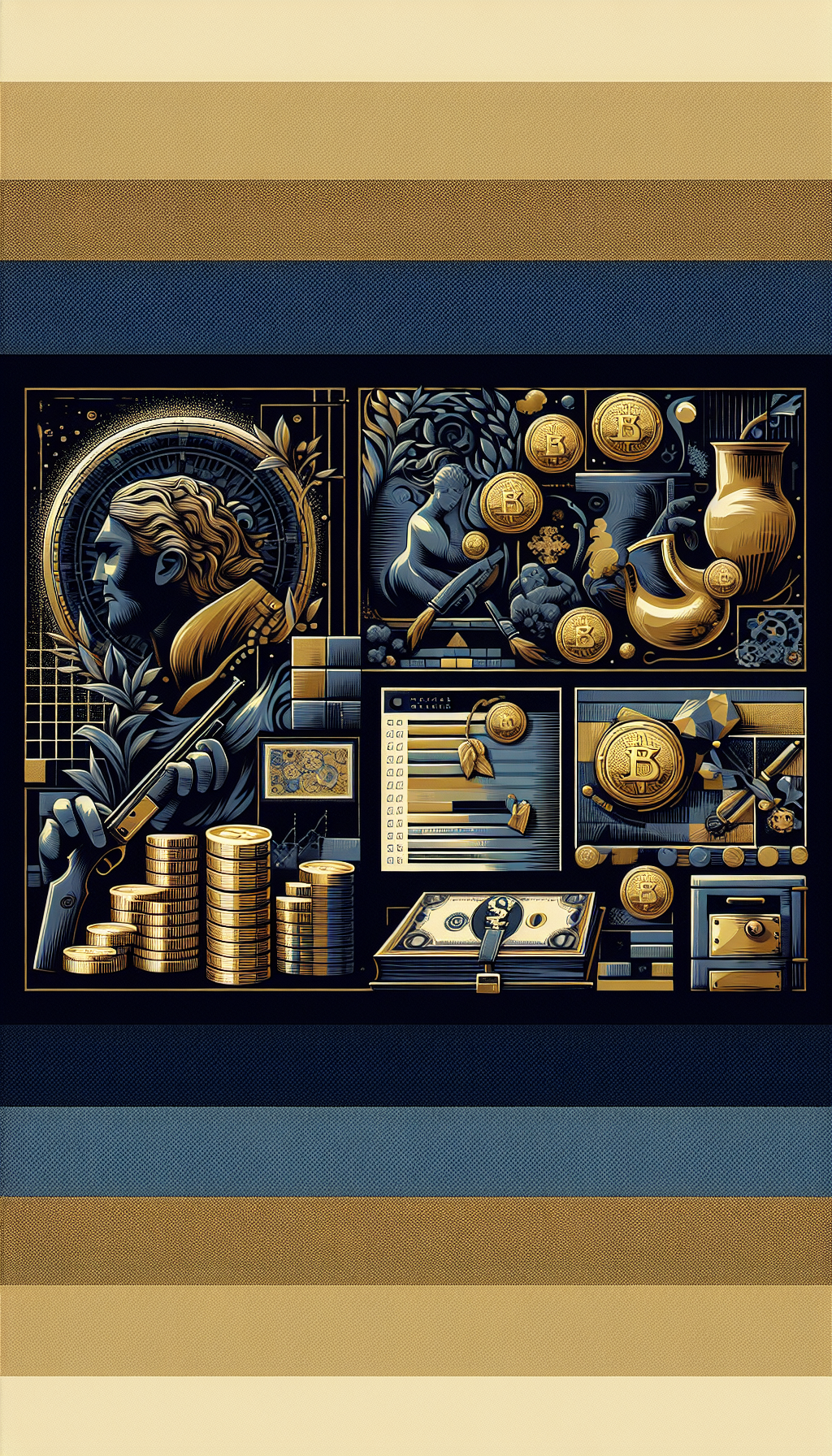G Jerome 19th Century Original Painting
For collectors and appraisers, the label “G Jerome” on a 19th-century painting almost always points to the French academic master Jean‑Léon Gérôme (1824–1904). Because his surname is frequently anglicized without the accent (Gerome/Jerome) and his signature appears in several forms, misattributions, reproductions, and studio copies are common. This guide explains how to recognize a genuine Gérôme, separate originals from prints and copies, evaluate condition and value, and structure a credible appraisal.
Who was “G Jerome”? Understanding the Name and Artist
- Identity: “G Jerome” typically refers to Jean‑Léon Gérôme, a leading figure of French academic art. Some inscriptions or listings shorten or anglicize his name to “G. Jerome” or “J. L. Gerome” (often without the accent).
- Period and genres: Active mid-to-late 19th century, Gérôme painted:
- Orientalist scenes (Middle Eastern and North African subjects)
- Classical antiquity and historical reconstructions
- Genre scenes and portraits
- Occasionally biblical or mythological themes
- Style: Hallmarks include smooth, enamel-like surfaces; minute detail; archaeological precision; and careful, staged lighting. Gérôme’s finish is famously tight—brushwork is subdued, edges are crisp, and textures (stone, tile, fabric, metal) are rendered with exacting realism.
- Market context: Gérôme’s paintings were widely disseminated via reproductions (by dealers such as Goupil & Cie), fueling both his fame and a long trail of imitative works. That legacy complicates attributions today.
Hallmarks of an Authentic Gérôme Painting
While no single trait is definitive, a convergence of the following characteristics supports authenticity:
- Medium and support:
- Primarily oil on canvas; cabinet-size oils on panel also occur.
- Fine to very fine weave canvases are typical; 19th-century French stretchers with beveled bars are common.
- Surface and technique:
- Highly controlled, polished finish with minimal visible brushwork.
- Subtle, layered modeling without heavy impasto; reflective varnish often accentuates a porcelain-like sheen.
- Geometry and perspective are meticulously plotted; tiled floors, carved architectural elements, and inscriptions are rendered with exactitude.
- Palette and light:
- Naturalistic color with cool, controlled shadows; careful modulation of highlights on metallic and glazed surfaces.
- In orientalist works, richly patterned textiles and ceramics balance against cool stone architecture.
- Composition and subject cues:
- Architectural backdrops that feel archeologically plausible, often with epigraphic details.
- Figures posed theatrically yet anatomically precise; gestures read like staged tableaux.
- Preparatory discipline:
- Gérôme built compositions from extensive preparatory studies and sometimes used photography. Under technical imaging, you may see finely planned underdrawing and compositional adjustments consistent with a methodical process.
Any deviation—e.g., broad, loose brushwork; crude anatomy; generic backgrounds—should prompt caution.
Signatures, Inscriptions, and Dealer Labels
- Signature variants:
- “J. L. Gérôme” or “J. L. Gerome” (accent may be absent)
- “J. L. GEROME” in capitals is seen on some works
- Less common: just “Gérôme” or “Gerome”
- Placement and execution:
- Often lower right, occasionally lower left, sometimes integrated on an architectural element (e.g., a step or plinth).
- Typically neat and deliberate, sometimes with a date.
- Paint of the signature should be consistent with the work’s aging, craquelure, and varnish layers. A floating, fresh-looking signature on an older surface is a red flag.
- Dates and inscriptions:
- Salon dates or titles can appear on labels or the stretcher. Inscriptions sometimes note the Salon year or a descriptive title in French.
- Dealer and exhibition labels:
- Goupil & Cie labels are important; Gérôme’s primary dealer produced and retailed both originals and authorized reproductions. Study the label type, typography, and paper aging; cross-reference with known period labels.
- Salon or gallery labels on the frame, backing board, or stretcher can support provenance.
- Stamps and markings:
- French colormen’s stamps on canvas or stretcher (e.g., suppliers based in Paris) are consistent with the period.
- Old inventory numbers painted on stretcher bars or frame rails are common in works that passed through major dealers or collections.
Note: A printed signature on a photogravure or chromolithograph is not an artist’s autograph. Magnification quickly shows if a signature is printed (halftone dots or uniform ink) rather than painted.
Originals vs. Prints, Copies, and Studio Works
- Photogravures and engravings:
- Gérôme’s partnership with dealers like Goupil led to high-quality photogravures and engravings, sometimes hand-colored, often framed like paintings.
- Diagnostics: uniform dot pattern, plate marks, or stipple when viewed under magnification; paper support rather than canvas; printed captions or publisher details along margins (sometimes trimmed).
- Chromolithographs:
- Layered color printing can mimic brush texture from a distance; under loupe, color fields resolve into discrete ink areas with crisp boundaries.
- Oil copies “after Gérôme”:
- Many 19th- and early 20th-century painters made oil copies of Gérôme’s famous compositions. Auction catalogues often label these “After Gérôme.”
- Telltales: competent but less exacting detail; inconsistent perspective; genericized ornament; different dimensions or proportions from documented originals.
- Studio pieces and followers:
- Gérôme taught an influential atelier. Works by pupils or followers can be close in spirit but usually lack his finish and compositional rigor.
- Reworked prints:
- Period photogravures with overpainting are sometimes marketed as “mixed media” originals. They remain reproductive prints with decorative paint layers and should be valued accordingly.
If the subject is a known Gérôme composition, compare dimensions and details against documented versions and authorized replicas. Only the materials, execution, and provenance chain can elevate it from “after” to “by.”
Condition and Conservation: What Appraisers Look For
Nineteenth-century oils commonly present age-related issues that affect value:
- Varnish and surface:
- Natural resin varnishes yellow over time, muting blues and pushing whites toward cream. Cleaning to a stable degree can recover chroma but must be done judiciously.
- Craquelure:
- Fine, regular craquelure consistent with age is normal. Wide, lifting cracks or cupping indicate structural stress.
- Structural interventions:
- Linings and relinings are common on canvases over 100 years old. A competent lining can be acceptable, but excessive flattening or heat damage will reduce value.
- Panel works may show splits or restorations along the grain; edge joins should be examined closely.
- Inpainting and abrasion:
- Ultraviolet examination reveals retouching; scattered, well-executed retouches may be acceptable, but broad repaints, overcleaning, or abrasion of the original paint surface will materially lower value.
- Frames:
- Period French gilt frames add value when original or period-appropriate. Later substitutions are fine for display but don’t carry the same historical interest.
Document condition meticulously; a small, perfectly preserved cabinet picture can outperform a larger but compromised work.
Market and Valuation Factors
Gérôme’s market remains robust, but values vary widely based on subject, quality, size, and provenance:
- Subject hierarchy:
- Top tier: masterful orientalist interiors with figures, classical history scenes with complex architecture, and iconic narratives.
- Mid tier: cabinet-sized orientalist or classical subjects with fewer figures; finely finished portraits.
- Lower tier: studio fragments, less finished studies, and works with substantial condition issues.
- Size and format:
- Large, exhibition-scale canvases command a premium but also carry higher conservation risk. Cabinet pictures on panel with jewel-like finish are highly collectible.
- Period and quality:
- Peak-maturity works with the crisp, fully realized finish outpace early or late pieces that feel tentative or mannered.
- Provenance and exhibition history:
- Salon exhibition records, Goupil stock references, prominent collections, and published listings (especially inclusion in a catalogue raisonné) significantly strengthen value.
- Comparables:
- Track realized prices for similar subjects and sizes within the last several market cycles. Reproductive prints, copies, and “after” works are not valid comparables for originals.
As a broad orientation: fine, authentic oils range from high five figures for modest subjects up to six or seven figures for major, well-documented works in strong condition. Works on paper and prints occupy lower tiers; hand-colored photogravures remain decorative rather than investment-grade.
Authentication and Appraisal Roadmap
A defensible appraisal for a “G. Jerome” painting follows a structured process:
- Intake and triage:
- Record dimensions, medium, support, inscriptions, labels, and any frame markings.
- Capture high-resolution images: front (raking light at multiple angles), back, edges, signature, and all labels/stamps.
- Materials and technique review:
- Under magnification, assess paint layering, brushwork, and whether the signature is painted or printed.
- Determine if the support is canvas, panel, or paper; verify ground layers and any weave or wood characteristics.
- Technical examination:
- UV fluorescence to map varnish, retouches, and overpaints.
- When warranted, infrared reflectography and X‑radiography to evaluate underdrawing, pentimenti, and structural history.
- Provenance research:
- Assemble chain of ownership with dated documents, bills of sale, dealer stock numbers (e.g., Goupil), and exhibition catalog references (particularly Salon entries).
- Literature correlation:
- Check authoritative catalogues and monographs. The standard catalogue raisonné for Gérôme (compiled by Gerald M. Ackerman, with later updates) is the key reference.
- Expert opinion:
- Seek opinions from recognized Gérôme specialists or institutions experienced with 19th‑century French academic painting. A positive opinion and literature inclusion can be decisive.
- Valuation:
- Build comparables from recent sales of genuine Gérôme works with similar subject, period, scale, and condition.
- Adjust for restoration burden, frame quality, and strength of provenance.
- Reporting:
- Provide a written report detailing methodology, findings, images, condition summary, literature citations, and justified valuation range.
Practical Checklist: “G Jerome” Due Diligence
- Identify the artist: assume “G Jerome” refers to Jean‑Léon Gérôme, but verify against style and quality.
- Inspect the signature: painted (not printed), age-consistent, and plausibly placed; note dates/inscriptions.
- Examine the support: canvas or panel consistent with 19th‑century French materials; avoid paper unless it’s a drawing.
- Rule out reproductions: loupe check for halftone dots/ink; look for plate marks or printed captions.
- Assess finish: tight, enamel-like surface with precise detail; weak or sloppy passages are suspect.
- Photograph labels and backs: Goupil labels, Salon tags, supplier stamps, and inventory numbers are vital.
- Conduct UV exam: map retouching; note overcleaning, abrasions, and varnish state.
- Research provenance: compile a document timeline; cross-check with the Gérôme catalogue raisonné.
- Compare subject and size: look for documented versions; ensure dimensions align with known works.
- Seek expert review: obtain a specialist opinion before concluding authorship or value.
FAQ
Q: My painting says “G. Jerome” but the brushwork is loose. Could it still be by Gérôme? A: Unlikely. Gérôme’s hallmark is a tight, meticulously finished surface. Loose, painterly handling suggests a follower, a copy after his compositions, or another artist entirely.
Q: The work has a Goupil label. Does that guarantee it’s an original painting? A: No. Goupil handled both originals and authorized reproductions. The label supports provenance but does not prove authorship. Corroborate with materials, technique, literature, and expert opinion.
Q: How can I tell if the signature is printed? A: Use a loupe. Printed signatures show uniform ink and often halftone dot patterns; a painted signature has brush anatomy, variable edges, and integrates with the varnish/craquelure.
Q: Are Gérôme’s photogravures valuable? A: They have decorative and historical value but sit well below originals. Condition, subject, and rarity can influence price, but they should not be equated with oil paintings.
Q: What documentation most increases value? A: Inclusion in the Gérôme catalogue raisonné, solid provenance (especially dealer stock records and Salon listings), exhibition history, and a clean, well-documented conservation record all enhance value.
By approaching a “G. Jerome” painting with disciplined scrutiny—materials, signature, provenance, literature, and expert confirmation—you can separate genuine works by Jean‑Léon Gérôme from the many lookalikes and establish a confident appraisal.



